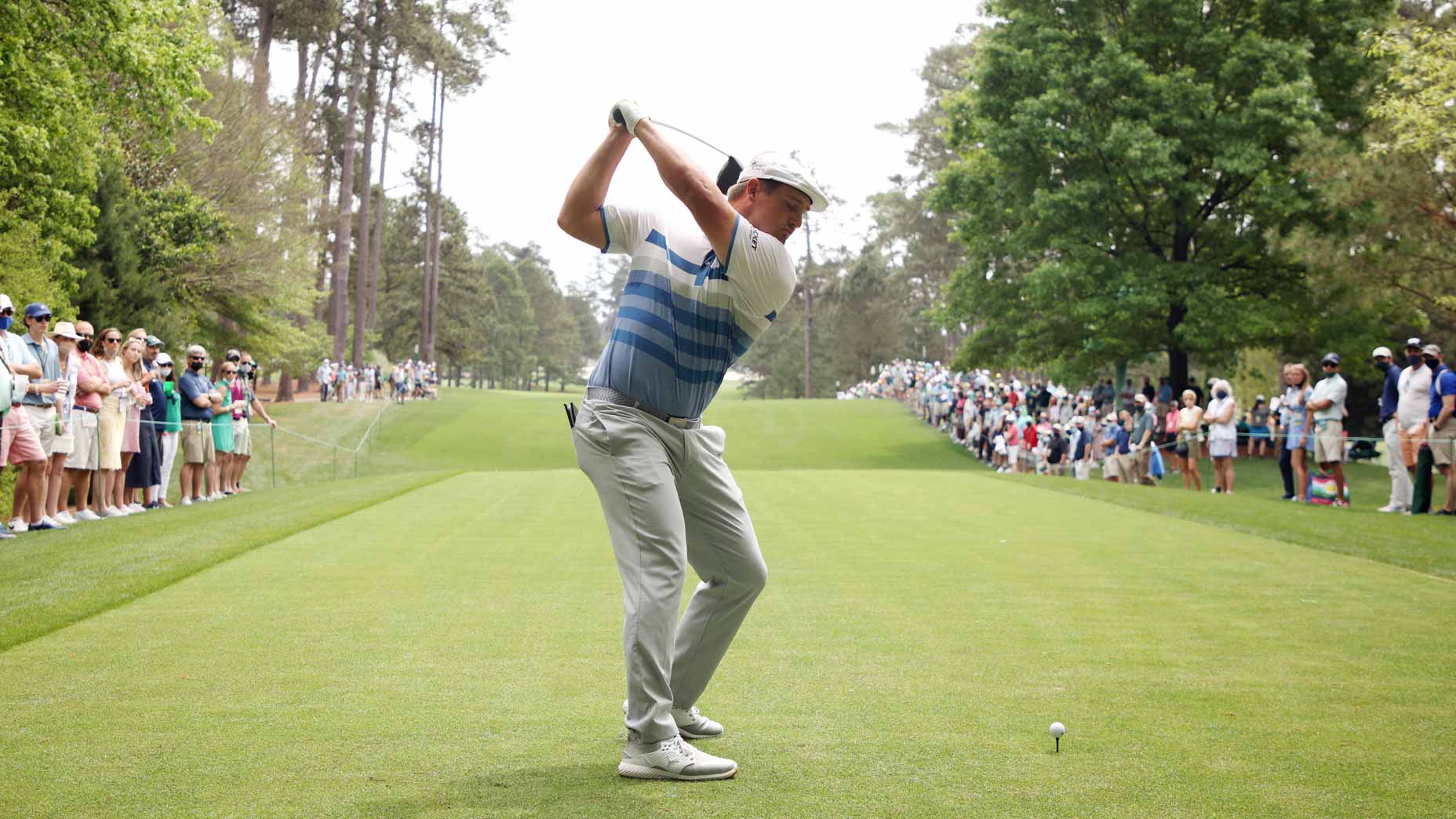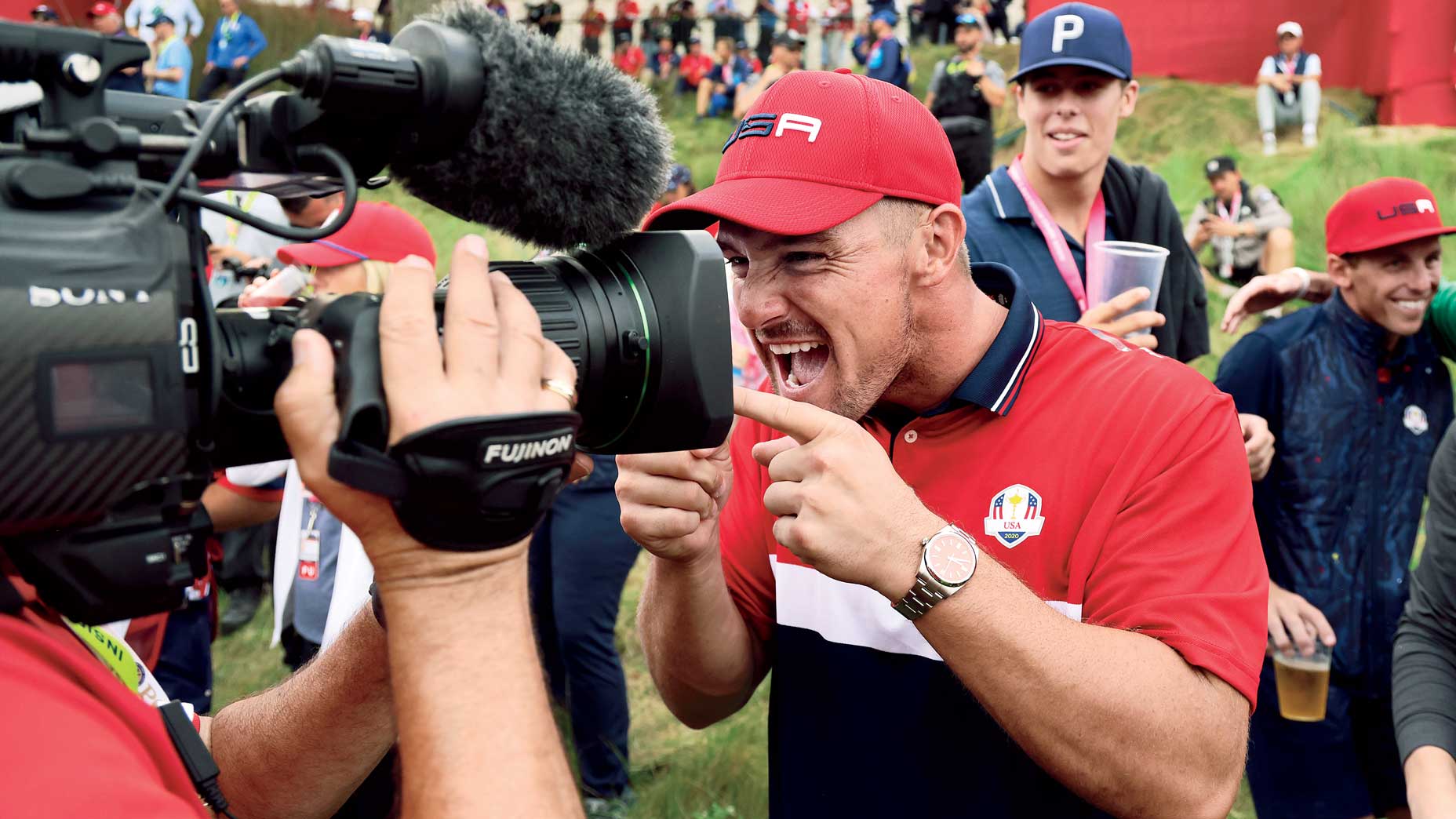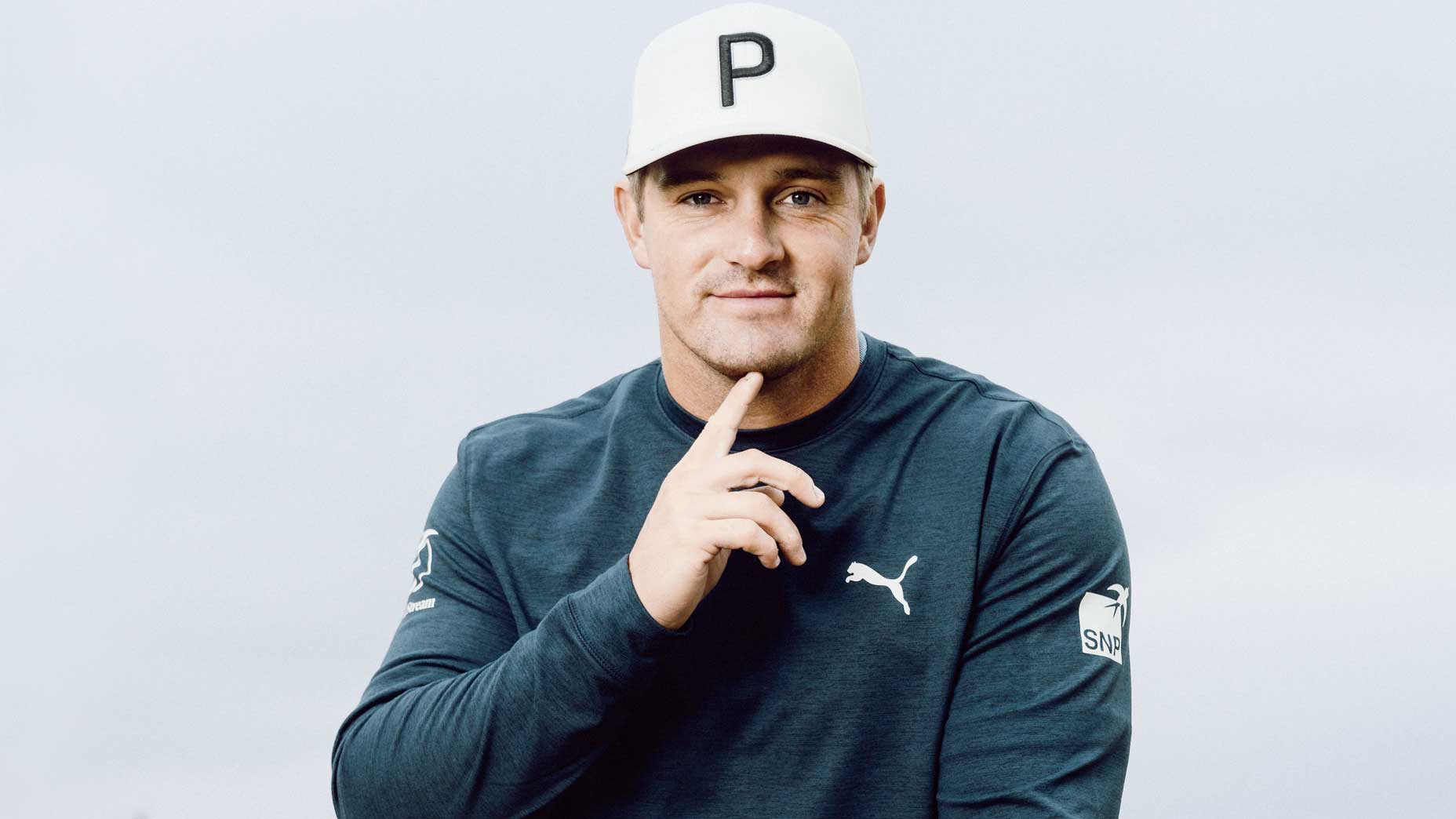GOLF’s playing editor, Bryson DeChambeau, doesn’t take any decision lightly. In honor of GOLF’s latest gear launch, ClubTest 2021, we asked the 2020 U.S. Open champ to break down his crucial gear decisions. And yes, his thought-process can help you, too.
Why I use graphite shafts throughout the bag
Like all golfers, I go graphite in the driver — but not for the reason you may think. People think that you don’t have to be precise with a driver because the fairways are 25 to 30 yards wide. Wrong. Precision is part of the reason everybody uses graphite in drivers. A good graphite driver shaft should be just as stable and repeatable, or even more so, than steel.
I use an LA Golf Partners (LAGP) shaft in my driver. I’ve always been blown away at how stable it is considering how fast I swing, so I eventually thought I’d try one in my putter (where a different kind of stability is important). It really worked well! I’ve won a lot of tournaments with an LAGP graphite shaft in the putter, so I won’t be going back to steel anytime soon.
You can guess where my mind went after that: What if I could replicate the stability of graphite in my irons as well? So I got together with LAGP and we decided to go with the stiffest graphite shaft they could build, knowing we could always back off from there. Like the putter experiment, the one for my irons worked really well. I had been spinning my iron shots too much, and the new graphite shafts lowered my spin rates and helped reduce deflection. First time out I grabbed a top-five finish at the Shriners Hospital for Children Open in Las Vegas. That was 2020. I was off to the races after that.
LAGP shafts have some unique technology. The dampening mechanisms make their graphite feel like steel. They’re really comfortable — not light or flimsy. And they’re super precise and predictable, with no manufacturing imperfections. I’m all about quality control in every part of my bag — shafts, club, ball, grips. It all has to be up to the highest standards in order for me to play my best possible golf. There’s no reason you shouldn’t set the same benchmarks.

My fascination with monster-sized grips
I’ve been using JumboMax grips on my clubs since 2011. Even as an 18-year-old I could swing the club pretty hard, and with the interlocking grip I used at that time, my fingers would hurt. I started getting weird pains in my hand. I decided I wanted to try something bigger.
My coach, Mike Schy, came back with JumboMax. I kid you not — zero pain from the first swing on. My initial JumboMax grips were mediums. I quickly went to their XL model. It was the greatest thing I’d ever experienced. It started making sense: Grips are naturally bigger in almost every other sport. You hold a bowling ball more in the palm of your hand. Tennis rackets, baseball bats — much bigger grips than a golf club. I soon thought, Why isn’t every golfer doing this? For fun, check out your favorite NBA player when you see them on TV in a pro-am or charity event. They all use JumboMax grips, because their hands are so big. That said, almost nobody gets fitted for grips and they should.
How I test out new golf balls
Any ball I use has to work with my driver. No compromise there. And I think that’s where amateurs should start too. Then you get to the business of making sure it works for your irons. (For the record, I do indeed test a ball with every single club to make sure all of the spin rates and launch angles are correct.)

When you’re testing a new golf ball, pay particular attention to the last three-quarters of ballflight, especially the end. That’s where you’ll really see if it’s stable or not. There’s a lot more that I could go into, but that’s how I start the test process. The last time I went through it, the Bridgestone TOUR B X came out on top.
My team and I used to test every ball to see if the core was centered. Painful! What’s good about playing Bridgestone (one of their models has been in my bag since the 2016 Masters) is that their quality-control standards are so high I don’t have to worry about it anymore.
Gear Up Like Bryson
The most important design element to consider when buying a wedge
You won’t believe me, but it’s the shaft. Most people go with whatever stock option is offered. That may not “kick” properly for your swing speed or what you’re trying to accomplish. You need a shaft that responds consistently. It’s extra important if your swing speed is erratic, which is probably true for a lot of recreational players. This causes a wide variance in dynamic loft at impact, meaning you need a stiffer shaft, which probably isn’t the one coming off the rack.
When you know a club gives you the best chance of optimizing launch
I would say this: Check your lofts. You know how everyone says “An 8-iron is X loft,” “a 7-iron is Y loft” and so on? Don’t think of it that way. Think of it as “I’m unique in the way I deliver the golf club.” My advice: Match loft to spin rate and the launch angle you need. You have to be okay with changing lofts. And if this all sounds very confusing, then you’re starting to realize the importance of working with a professional clubfitter.
I see a lot of rec players simply opting for the ‘coolest’ clubs they see. That isn’t going to cut it. You must find a club that fits you.
If I’ll continue with the one-length irons approach
Absolutely! Flash back to 2011. I was trying to figure out a better way to practice — work half the number of hours while getting twice as good. One thing I looked at was my irons. It’s really difficult to master a 3-iron all the way through the wedges. That’s something I struggled with. I saw every single club was being swung on a different plane, and I was in a different body posture. I thought, Why are all of the iron lengths different? Why can’t they all be the same length and just have different lofts?
Mike Schy said, “That’s an easy question to ask and a very difficult one to answer.” We went down the rabbit hole of trying to figure it out. We got all the same club lengths, grips, shafts, club-head weight — just different lofts.
We went out and tried it. It took me less than an hour to get used to those clubs. Over the course of time, it integrated even more. I felt like this was something — if people would really think about it — that could completely revolutionize the game. I still do. And it’s why I partnered with Cobra on their One Length offerings.
Here’s the rub: When I practice with my pitching wedge, I’m also practicing my 3-iron. When I’m practicing my 7-iron, I’m practicing with my pitching wedge. On every swing I’m getting reps with the same club, because I’m using the same posture, stance, setup — everything. Talk about efficiency!
The biggest equipment-buying mistakes I see amateurs make
I’m deeply ingrained into trying to figure out what I’m working on. As such, I’m no expert on the amateur game. But, for the most part, I see a lot of rec players simply opting for the “coolest” clubs they see. You know, the blade iron or the driver with the super-stiff shaft or whatever. That isn’t going to cut it. You must find a club that fits you, whatever it is. Look at my bag — I sort of have a cavity-back thing going on with the Cobra King Forged Tour irons. Maybe that surprises you. Don’t let it. I go with what works.

What putting or putter feature to focus on the most
Stability is the important thing, whether you’re on the course or just practicing. Always look for ways to get more stable through impact so that it feels more comfortable on any length putt. That’s what I’m looking for in a design feature, whether it’s high MOI, a stiffer shaft, arm-lock technique — anything that allows me to be more stable and more repeatable on the greens.
One equipment change rec players can make to instantly lower their scores
Going with single-length irons is the answer. It’s just super easy to do because they’re all the same. In the beginning you may think, The pitching wedge, it’s longer. No, it’s just your 7-iron with a different loft. Just think of every iron as a 7-iron and you’ll start noticing consistently better — and centered — contact.
Why you should never test gear in the absence of a launch monitor
This depends on where you’re at in your game, but if you can understand the data, you can always make better decisions.
The correct way to demo a longer shaft
My advice is to try 45, 46, 47 and then maybe 47.75 inches — just short of 48 inches, the current legal limit. Spend the time testing out the different products to get comfortable with whatever it is you ultimately decide is right for you.
Are we going to see 47 or 48 inches from me this year?
Probably at some point, if there’s a course it makes sense on. If I’m moving it and controlling the longer driver in practice, yes, you’ll see it.
Need help with your game? Get fit for new clubs from the experts at our sister company, True Spec Golf.














